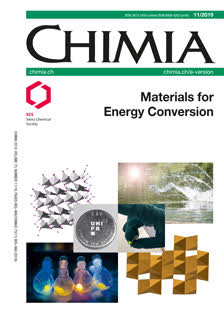Renewable Energy from Finite Resources: Example of Emerging Photovoltaics
DOI:
https://doi.org/10.2533/chimia.2019.874PMID:
31753068Keywords:
Clean technologies, Critical raw materials, Secondary sources, Thin film photovoltaicsAbstract
Renewable energies, such as sunlight, wind and geothermal heat, are resources that are replaced rapidly by natural processes. However, wind, hydro and solar installations strictly require raw materials that are, in fact, not renewable. Many raw materials are already facing a supply shortage which cannot be easily overcome. This work reviews the problem of critical raw material (CRM) use in photovoltaics (PV) as an example and explains why supply cannot be easily increased to meet demand. We discuss whether there is indeed a 'struggle for elements' in a Darwinian sense, which ultimately leads to a 'survival of the fittest' race in renewable energy technology. In the case of PV, the perception of the definition of 'fittest' needs to change from that considering energy conversion efficiency alone to that which holistically considers net energy produced per emission under the premise that sufficient environmentally and socially acceptable raw material supply exists for renewable energies and all other sectors.Downloads
Published
2019-11-01
Issue
Section
Scientific Articles
License
Copyright (c) 2019 Swiss Chemical Society

This work is licensed under a Creative Commons Attribution-NonCommercial 4.0 International License.
How to Cite
[1]
F. Schmidt, A. Schäffer, M. Lenz, Chimia 2019, 73, 874, DOI: 10.2533/chimia.2019.874.







